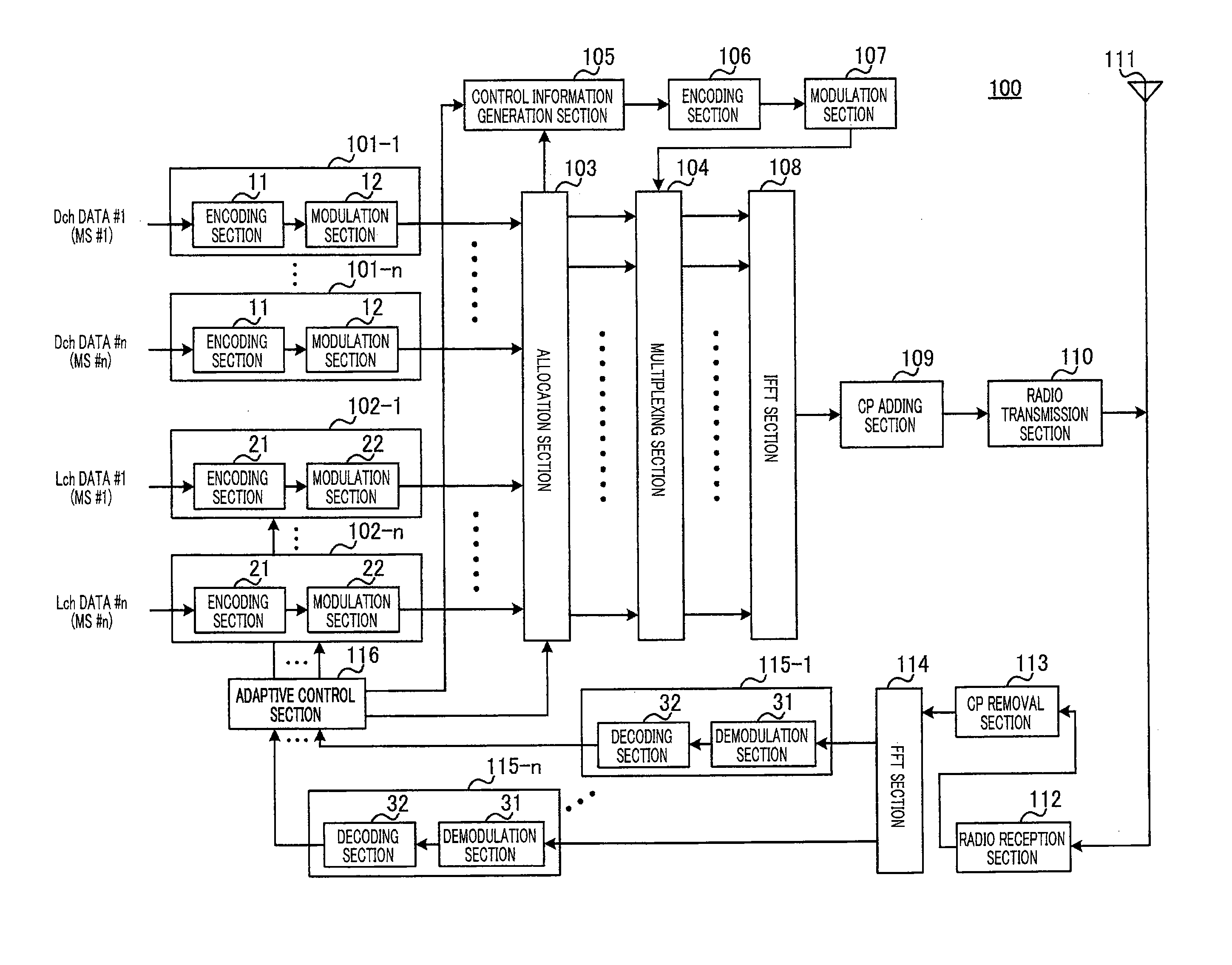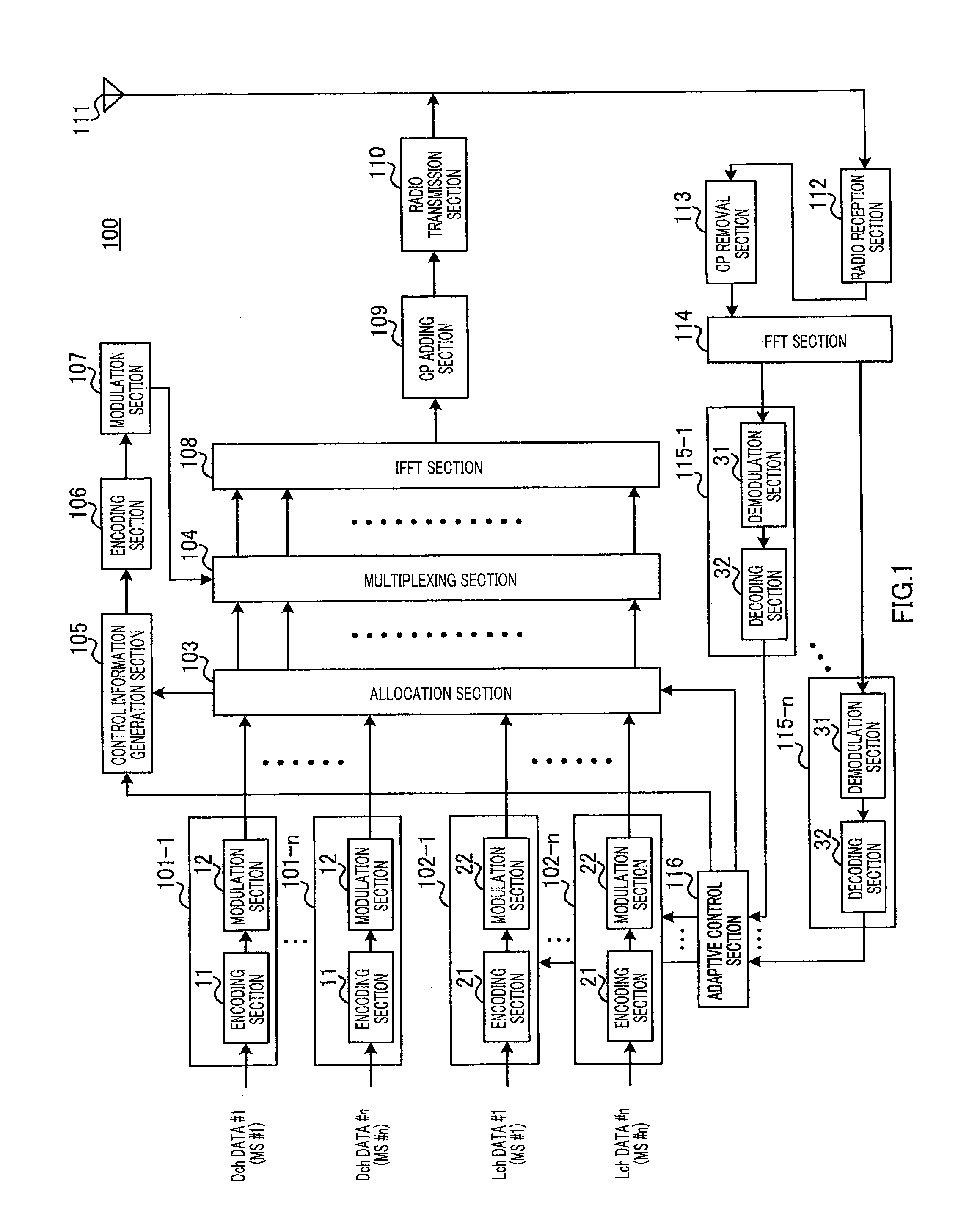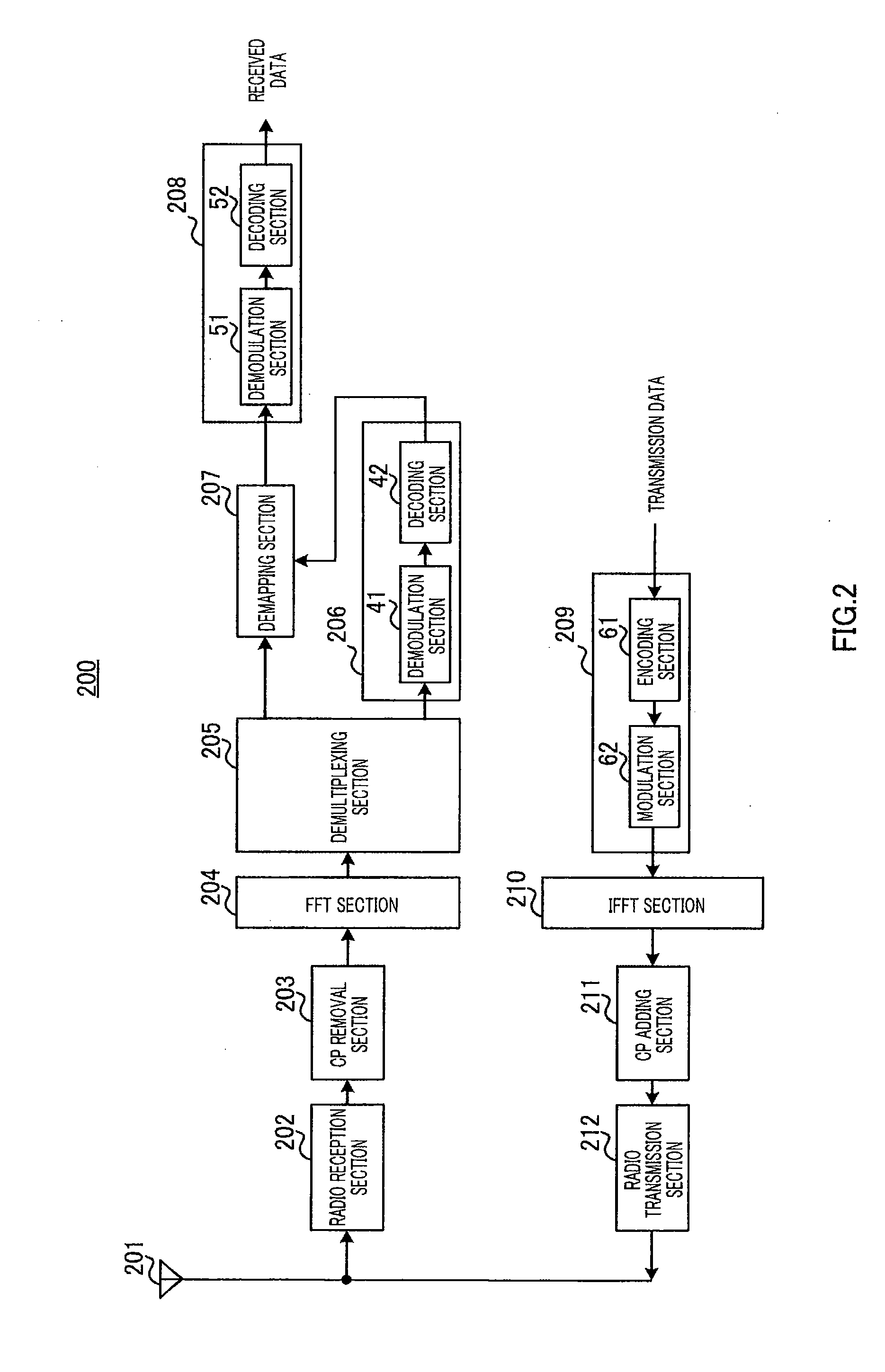Channel arrangement method and radio communication device
a radio communication device and channel arrangement technology, applied in the field of channel arrangement method and radio communication base station apparatus, can solve the problems of not providing the kind of multi-user diversity effect obtained with frequency scheduling transmission, and not being suitable for data communication, so as to prevent the fall in the utilization efficiency of channel communication resources for performing frequency diversity transmission
- Summary
- Abstract
- Description
- Claims
- Application Information
AI Technical Summary
Benefits of technology
Problems solved by technology
Method used
Image
Examples
embodiment 1
[0044]The configuration of base station 100 according to this embodiment is shown in FIG. 1. Base station 100 divides a plurality of subcarriers comprised of an OFDM symbol that is a multicarrier signal into a plurality of RBs, and uses a Dch and Lch on an RB-by-RB basis in that plurality of RBs. Also, either a Dch or an Lch is allocated to one mobile station in the same subframe.
[0045]Base station 100 is equipped with n encoding and modulation sections 101-1 through 101-n each comprising encoding section 11 and modulation section 12 for Dch data, n encoding and modulation sections 102-1 through 102-n each comprising encoding section 21 and modulation section 22 for Lch data, and n demodulation and decoding sections 115-1 through 115-n each comprising demodulation section 31 and decoding section 32, where n is a number of mobile stations (MSs) with which base station 100 can communicate.
[0046]In encoding and modulation sections 101-1 through 101-n, encoding section 11 performs turbo...
embodiment 2
[0142]In this embodiment a case will be described in which switching between use of Arrangement Method 1 and Arrangement Method 2 of Embodiment 1 is performed according to the communication environment.
[0143]As described above, Arrangement Method 1 enables more RBs consecutive in the frequency domain that can be used for Lch's to be secured than Arrangement Method 2, while Arrangement Method 2 has a greater frequency diversity effect than Arrangement Method 1.
[0144]Specifically, when four consecutive Dch's, Dch #1 through #4, are used for a Dch data symbol of one mobile station, with Arrangement Method 1 (FIG. 5) four RBs consecutive in the frequency domain, RB #3 through #6 and RB #9 through #12, can be used for an Lch, while a Dch data symbol is allocated to two RBs consecutive in the frequency domain, RB #1, #2 and RB #7, #8. On the other hand, with Arrangement Method 2 (FIG. 9) only two RBs consecutive in the frequency domain, RB #2, #3, RB #5, #6, RB #8, #9, and RB #11, #12, ca...
embodiment 3
[0181]In this embodiment a case will be described in which only one Dch is arranged in one RB (the number of subblock divisions per RB is one).
[0182]First, a relational expression for a Dch channel number and the RB number of an RB in which that Dch is arranged will be shown.
[0183]RB number j of an RB in which a Dch with channel number k is arranged is given by Equation (3) below.
[3]
j=q(k) (Equation 3)
[0184]where k=1, 2, . . . , Nrb, and q(k) is given by an M-row×(Nrb / M)-column block interleaver where M is an arbitrary positive integer.
[0185]If it is assumed here that Nrb=12 and M=4, q(k) is given by the 4-row×3-column block interleaver shown in FIG. 21. That is to say, as shown in FIG. 21, q(k)=1, 7, 4, 10, 2, 8, 5, 11, 3, 9, 6, 12 is obtained for k=1, 2, 3, 4, 5, 6, 7, 8, 9, 10, 11, 12. Thus, Dch #(k) is distributively arranged in RB #(q(k)).
[0186]Specifically, as shown in FIG. 22, Dch #1 is arranged in RB #1, Dch #5 is arranged in RB #2, Dch #9 is arranged in RB #3, Dch #3 is ar...
PUM
 Login to View More
Login to View More Abstract
Description
Claims
Application Information
 Login to View More
Login to View More - R&D
- Intellectual Property
- Life Sciences
- Materials
- Tech Scout
- Unparalleled Data Quality
- Higher Quality Content
- 60% Fewer Hallucinations
Browse by: Latest US Patents, China's latest patents, Technical Efficacy Thesaurus, Application Domain, Technology Topic, Popular Technical Reports.
© 2025 PatSnap. All rights reserved.Legal|Privacy policy|Modern Slavery Act Transparency Statement|Sitemap|About US| Contact US: help@patsnap.com



